We replace hoses if cracks or swelling appear on them, as well as after 5 years of operation
There are cases when the hose collapses inside, making it difficult for the brake fluid to pass through.
In this case, a defect in the caliper wedging occurs.
Intensive wear of the brake pads and brake disc occurs due to significant heating.
Drain the brake fluid (see the article - “Replacing brake fluid and bleeding the brake system of a Gazelle car”).
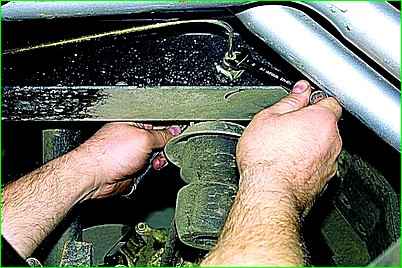
Holding the tip of the brake hose with a 17 wrench on the outside of the frame, on the inside of the frame with a 12 wrench or a special wrench, unscrew the tube fitting (for clarity, the wheel has been removed).
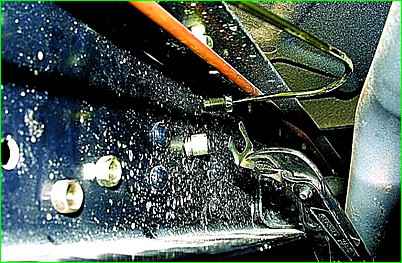
Use pliers to remove the locking spring plate and remove the hose from the hole in the frame.
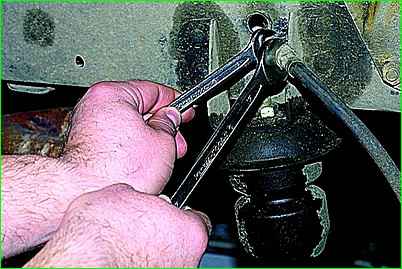
If it is not possible to unscrew the brake pipe fitting in this position, remove the locking plate and take the hose tip together with the tube into the wheel niche, where, holding the tip with a 17 wrench, use a 12 wrench to unscrew the pipe fitting.
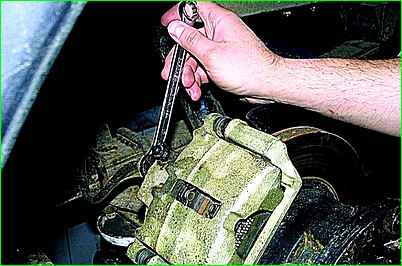
Using a 17mm wrench, unscrew the second hose tip from the brake cylinder and remove the hose
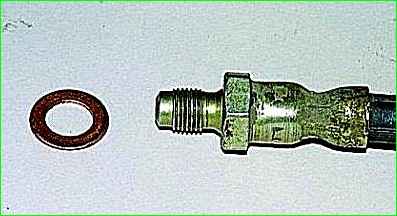
A copper sealing washer is installed between the hose tip and the cylinder.
Install the new hose in the reverse order, replacing the copper sealing washer with a new one.
After filling the working fluid and bleeding the system, make sure there are no bulges in the hose or brake fluid leaks from the connections.





